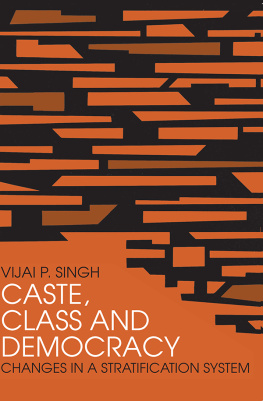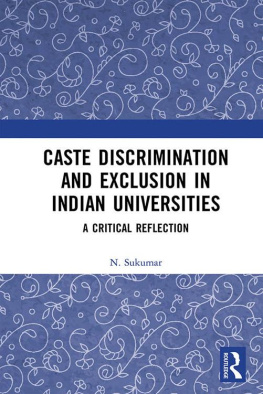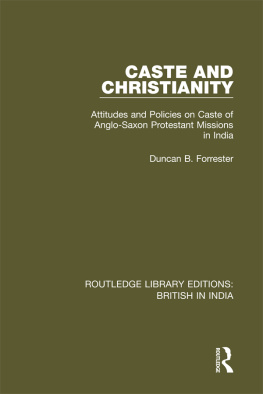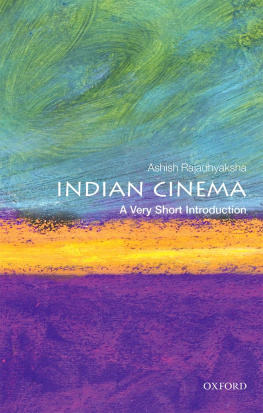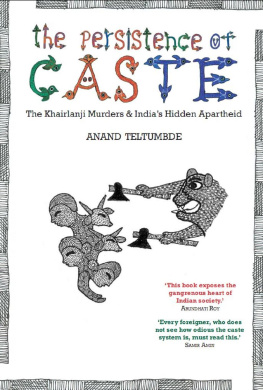Vijai P. Singh - Caste, Class and Democracy
Here you can read online Vijai P. Singh - Caste, Class and Democracy full text of the book (entire story) in english for free. Download pdf and epub, get meaning, cover and reviews about this ebook. year: 2017, publisher: Routledge, genre: Politics. Description of the work, (preface) as well as reviews are available. Best literature library LitArk.com created for fans of good reading and offers a wide selection of genres:
Romance novel
Science fiction
Adventure
Detective
Science
History
Home and family
Prose
Art
Politics
Computer
Non-fiction
Religion
Business
Children
Humor
Choose a favorite category and find really read worthwhile books. Enjoy immersion in the world of imagination, feel the emotions of the characters or learn something new for yourself, make an fascinating discovery.
- Book:Caste, Class and Democracy
- Author:
- Publisher:Routledge
- Genre:
- Year:2017
- Rating:4 / 5
- Favourites:Add to favourites
- Your mark:
Caste, Class and Democracy: summary, description and annotation
We offer to read an annotation, description, summary or preface (depends on what the author of the book "Caste, Class and Democracy" wrote himself). If you haven't found the necessary information about the book — write in the comments, we will try to find it.
This volume is an introduction to the role of caste and class in Indian society, meant to emphasize certain important aspects of Indian society such as continuity and change in caste, economic classes, status of women, status of Harijans, village poli-tics, overseas Indians, and casteism and tribalism. Its theoretical interest is to explain the dynamics of social inequalities in Indian society.
All but one of the essays are based on research conducted in India. The other is based on research on Indian plantation workers in Sri Lanka, and included here to demonstrate that the concepts of caste and class are relevant to understanding In-dians who have emigrated to overseas countries.
Vijai P. Singh: author's other books
Who wrote Caste, Class and Democracy? Find out the surname, the name of the author of the book and a list of all author's works by series.

